Kazuma Tanaka and his wife Atsumi pictured with highly marbled Tajima Wagyu beef
TUCKED away high in the scenic mountain valleys south west of Japan’s spiritual beef capital of Kobe, a young Japanese farming couple are carving-out a vertically-integrated beef business based on the region’s famous Tajima Wagyu cattle.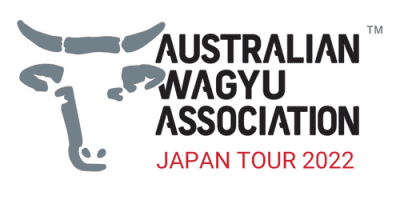 Kazuma Tanaka and his wife Atsumi hosted the Australian Wagyu Association 2022 Japan Wagyu tour group during a visit on Wednesday.
Kazuma Tanaka and his wife Atsumi hosted the Australian Wagyu Association 2022 Japan Wagyu tour group during a visit on Wednesday.
The Tanaka Chikusan farm in Shogo prefecture breeds Wagyu cattle, lotfeeding some themselves, and selling others as feeders.
Mrs Tanaka is a qualified butcher, and the couple have developed a successful e-commerce business, selling their premium farm-grown beef in small frozen 200 gram vacuum-packed retail packs online.
As MLA’s Japan region manager Scott Walker explains in a separate tour article this week, unlike their Korean neighbours, the Japanese have not yet been rapid adopters of e-commerce in beef sales, because they ‘prefer to buy with their eyes,’ but the Tanaka family is establishing a healthy niche.
Mr Tanaka has gathered a large social media following for his business and way-of-life, also supporting his family’s beef sales platform.
Like many cattle producers in this region of Japan, the Tanaka Chikusan farm concentrates solely on the Tajima strain of Wagyu genetics, rather than blending with other Wagyu strains like Kadaka and Shimane. The local Mikata County is considered by locals to be the true original source of Tajima cattle.
Tajima are smaller-framed and slower-growing Wagyu, but are famed for producing the very best marbling performance.
Nearby farmers fiercely guard the reputation of their local Tajima – so much so that cattle bred in the Tanaka’s home valley are bred only from bloodlines from that valley. The next valley does the same. Rivers, like the nearby Yada, also helped further-isolate local bloodlines from those only a few kilometres away, as the crow flies.
Tajima bred in the local Mikata county (representing around 3000 cows in total, apparently) were rarely crossed with Tajima from even the next county, Tanaka San said.
This had helped create very strong genetic lines, he said.
The small Tanaka property is located high in a valley in the mountains (elevation around 2700 feet), surrounded by incredibly scenic countryside in a remote location.
The Tanakas run about 100 breeding cows on a leased plateau area on the top of a nearby mountain over the warmer months, with the main property including a breeding barn and a growing/lotfeeding barn. The area can be covered with up to two metres of snow over winter. Some of the progeny are retained for lotfeeding at home, and others sold.
As a sideline, Mr Tanaka is also a contract hoof-trimmer – a regular requirement in shedded cattle operations in Japan.
Cows are brought into the breeding barn for winter, and the later stages of pregnancy and calving, being separated at around two months of age, to re-mate.
The Tanakas also have a separate venture fattening aged cull cows, for a specialist beef market. Some cows in this program were up to 17 years of age, and would be creep-fed over a year before slaughter.
The Tanakas said the aged cows produced slightly firmer meat, but more taste than the conventional Wagyu steer/heifer trade. Meat colour could be darker, but was being managed with ration manipulation, especially the use of dry rice straw – no wet ingredients. Marbling score is typically around BMS 4-5.
The aged cows average 300kg carcase weight at slaughter, compared with 450-500kg for fed steer.
“Tajima is a late-maturity meat – the older it gets the better it gets,” Tanaka san said.
At retail, the cow-meat sold ‘like hot cakes’ for around 3000 Yen per 100g (equivalent of about A$250/kg).
The pair said finishing cull cows was a growing part of the family’s beef business.
17-year-old Tajima cull cows being fed for a specialised niche Wagyu beef program on the Tanaka farm
The Tanaka Farm’s Tajima fed steer business grows cattle out to around 28-30 months, with a higher protein ration fed early in life, before a lower protein/higher roughage ration later in life.
“It’s really important to give young cattle more protein, to maximise marbling results later,” Tanaka san said.
Steers aged around 28 months, about to finish their program
Given the close genetic relationships within local breeding programs, questions inevitably arose from the AWA tour group about inbreeding and line-breeding.
They were told local cattle typically had an inbreeding coefficient of around 25pc. Male and female cousins (line-breeding) rarely occurred, because there was considered to be ‘no merit’ in it.
Mr Tanaka said 20 years ago, marbling performance in local cattle was less than what it is today.
“Cattle grading A5 (the top Japanese grading score for marbling and yield) used to be much less. But people focused on marbling way too much, and it’s one of the reasons we have some weaker calves today,” he said.
Some breeding programs recorded 0.5 to 1pc calf loss, but others might be 10pc – but not necessarily related solely to inbreeding.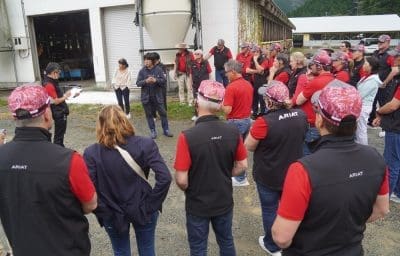
But in the Tanakas’ own program, the focus has shifted from breeding for marbling in isolation, to breeding better all-round cattle (using some less fashionable genetics), balancing cows for better longevity and better calf performance.
But above all, purity of Tajima bloodlines remained critically important in local breeding programs, the group was told, because the local Mikata cattle were seen as a pure source of Tajima for use across all of Japan.
Tanaka San is unusual, in that he is a first-generation cattle farmer, coming from a non-farming family near Kobe. The pair have owned their farm for 22 years, having graduated from agricultural university in Hokkaido before pursuing their dream to run livestock.
In discussions with the tour group about popular genetics, he was well aware of Monjiro, a popular foundation sire used in Australian Wagyu breeding programs.
The pair have gathered 14,000 followers on their social media accounts, including many regular meat customers. Tanatiku is their Instagram and youtube account name.
Not far from the Tanaka farm is an impressive museum dedicated solely to the region’s Tajima strain of Wagyu cattle, bred in the region for at least 1300 years.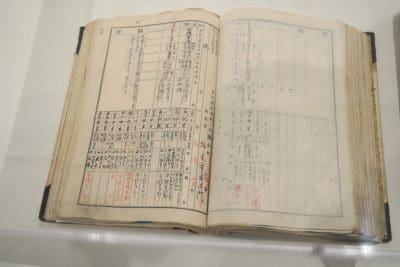
The highly interactive displays step through the origins and history of Tajima cattle across the region, how they are raised, fed and sold, and even how to best prepare and cook Tajima beef at home.
Ancient prefectural breeding records on display plotted the history of many local famous Wagyu animals.
A pedigree chart in the museum traced back 12 generations of famed Tajima cattle, including some of the bloodlines now in use in Australia including Yasufuku, Michifuku, Tanufuku and others.
More photos from the museum and the Tanaka farm visit below. Click on images to enlarge. Click twice to enlarge further.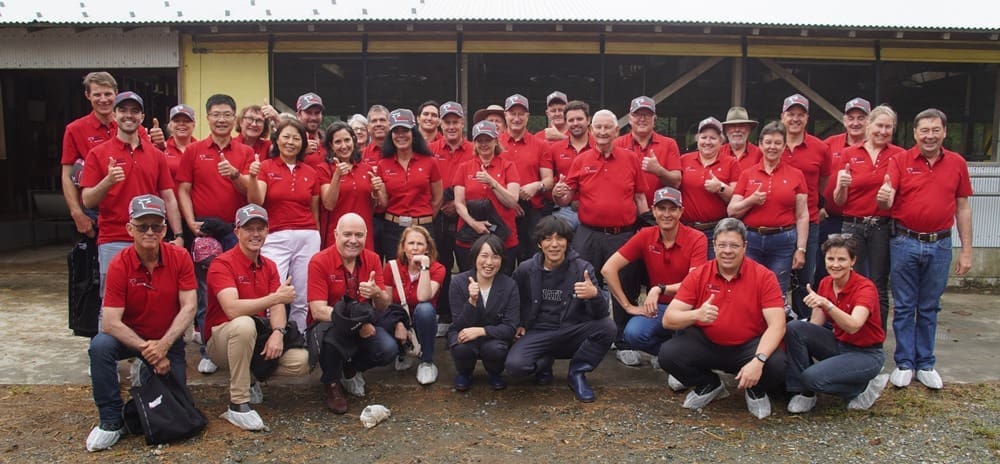
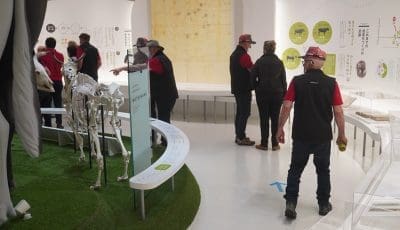
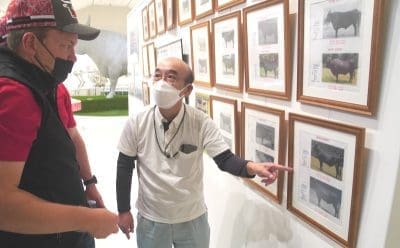
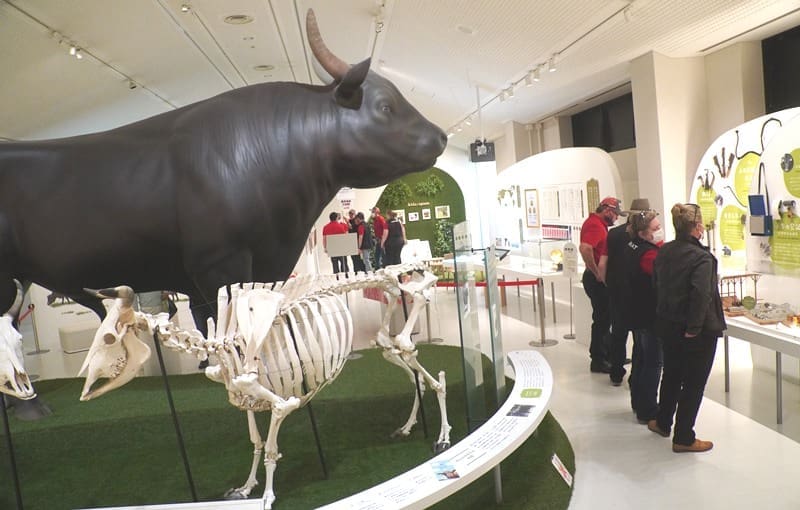
AWA Wagyu tour group members Steve and Nat Gibbons from Victoria, in front of Wagyu cows grazing a snow ski slope covered with summer pasture near the Tajima Museum
Your email address will not be published.
Your comment will not appear until it has been moderated.
Contributions that contravene our Comments Policy will not be published.
Powerful Wealth Building Resources








